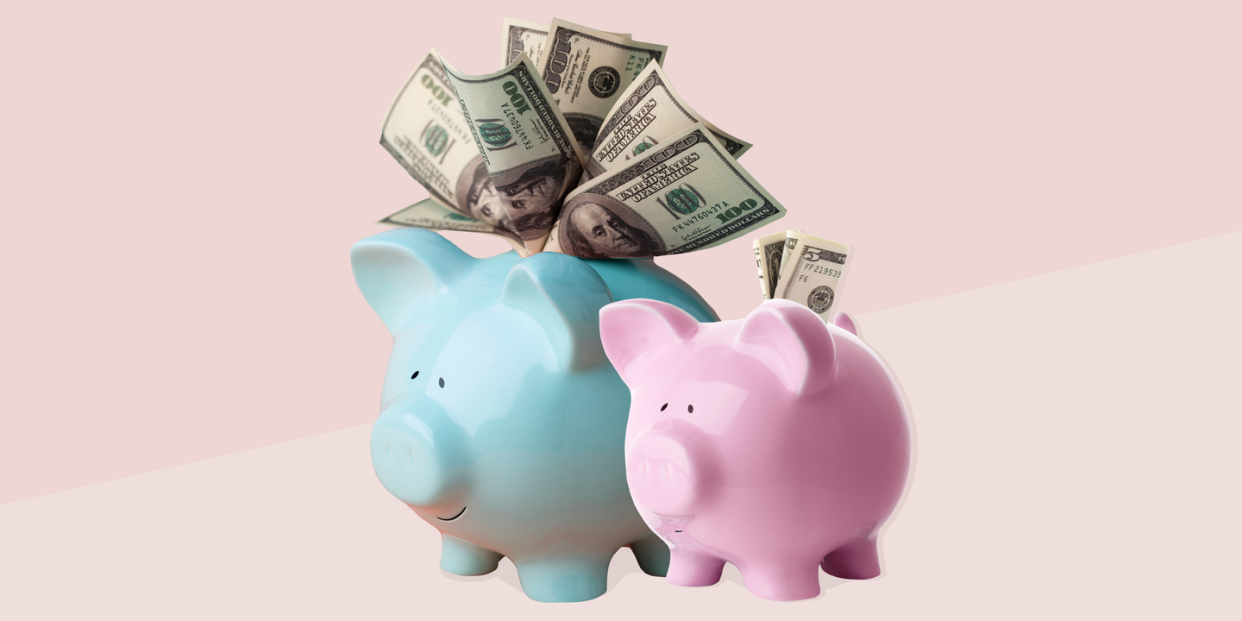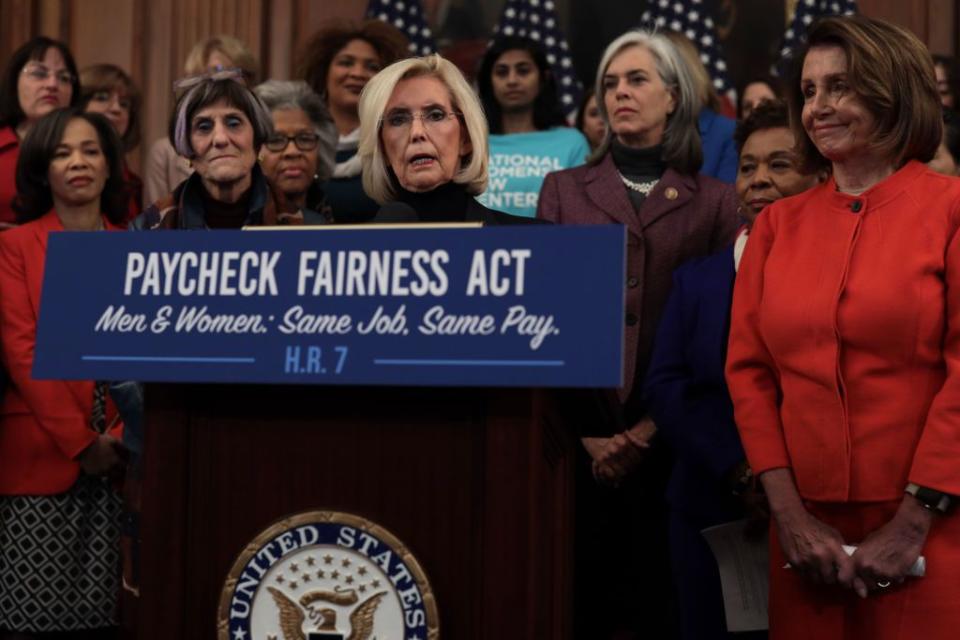The Gender Pay Gap Is Real And It's Coming For Your Paycheck

When it comes to annual income, savings, interest rates on loans, and the cost of everything from razors to deodorant, women can't catch a break.
Women have to contend with the pink tax, a fee added to feminine necessities like tampons and pads as well as to the "girl" version of t-shirts, socks, and shampoo. They are also often charged a higher interest rate for mortgage loans, despite their consistently higher credit ratings. And, last but not least, they also have to face the gender wage gap - also called the gender pay gap - for their entire professional careers.
What is the gender wage gap?
It’s the difference in pay between men and women for the same job. Currently, women make about 80 cents for every dollar a man brings in - that’s a gender wage gap of 20 percent.
At its worst, in 1966, the gender wage gap was more than 40 percent - women made just under 58 cents to a man’s dollar. At this glacial rate of improvement, women will have to wait until 2059 for equal pay. For women of color, the news is even worse: Black women will have to wait until 2119 for equal pay, while Hispanic women will wait until the year 2224.
And all this waiting adds up: According to a report from the National Partnership for Women & Families, the gender wage gap costs American women nearly $500 billion a year.

Is the gender wage gap legal?
No. After a non-discrimination bill failed to pass in 1944, the Equal Pay Act of 1963 was signed into law in June of that year by President John F. Kennedy. The law states that “ … no employer shall discriminate between employees on the basis of sex for equal work on jobs, the performance of which requires equal skill, effort, and responsibility.”

Unfortunately, the vague wording of some of the law’s provisions and a few built-in loopholes made proving gender wage discrimination almost impossible.
In 1998, Lily Ledbetter sued her employer, Goodyear, under the Equal Pay Act. She claimed that she had been paid less than her male counterparts during her 19-year tenure as a supervisor at the company’s Alabama location. And in fact, she had been: By 1997, she earned $3,727 per month. The next lowest paid (male) employee was paid $4,286 per month, and the highest paid (male) area manager received $5,236 per month.
The case was heard by the U.S. Supreme Court in 2007. The court agreed that Ledbetter had been discriminated against, but ruled against her anyway because she had not filed a complaint with the Equal Employment Opportunity Commission within the 180-day statute of limitations.
In 2009, president Obama signed the Lily Ledbetter Fair Pay Act, an amendment to the Equal Pay Act, to correct the loophole that allowed the Supreme Court to rule against her two years earlier.

But these incremental changes haven’t closed the wage gap entirely. In 2019, Rep. Rosa DeLauro (D-CT) and Sen. Patty Murray (D-WA) introduced yet another bill, The Paycheck Fairness Act of 2019, to address concerns like the use of salary history in pay negotiations and retaliation against employees who discuss their salaries with their colleagues.
Why does the gender wage gap exist?
For the most part, the gender wage gap is due to discrimination against women and other societal pressures and factors that assign less value to women and their abilities.
For decades, women were concentrated in lower-paying occupations like administrative work and housekeeping, which accounted for some of the difference in income. But even today, women's median earnings are lower than men's in nearly all occupations - even in teaching and nursing, two professions still dominated by women, men still earn more on average.
Some experts believe that the wage gap is tied to men's willingness to negotiate their salaries and ask for raises. Linda Babcock, an economics professor at Carnegie Mellon University and Sara Laschever, a writer and expert on the persistence of the wage gap, tackled this issue in their books Women Don't Ask and Ask For It. "Women often are socialized from an early age not to promote their own interests and to focus instead on the needs of others," Babcock has written. "Unlike men, they haven't been taught that they can ask for more."
Other studies have challenged the assertion that women are partially to blame for their lack of advancement. In a 2018 study from the University of London and the University of Wisconsin, researchers found that women actually do ask for raises as often as men, but women are more likely to be refused or to suffer blowback for asking.
Getting married and having children also contributes to the gender wage gap. In one study, mothers were recommended a nearly 8 percent lower starting salary and considered less committed and competent than non-mothers.
What can I do to avoid the gender wage gap?
Negotiate your salary, even for your first job. You may think you have no bargaining power, especially early in your career, but that's not always true. "Many first-time job seekers fail to understand that the hiring process is also very stressful on the hiring side," Babcock wrote in the Harvard Business Review.
When applying for a new job, stop answering questions about your salary history, which perpetuate the gender wage gap. Nine places, including California, Massachusetts, New York City and Philadelphia have banned employers from inquiring about past pay. If you're faced with a question about salary history, say something like, "I want to learn more about the job first, in order to have a better sense of my salary expectations." For more tips, look for a workshop through the American Association of University Women (AAUW).
('You Might Also Like',)

